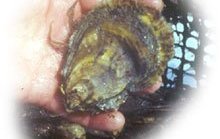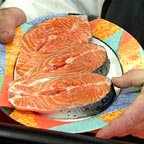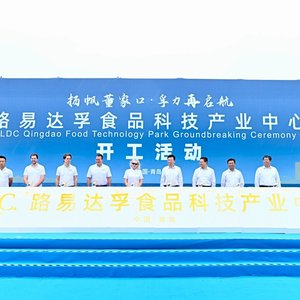The Kauffman Aquaculture Center (KAC) was specifically designed to enhance and extend the work and facilities of the Aquaculture Genetics and Breeding Technology Center (ABC) on VIMS' main campus in Gloucester Point. ABC was established by the Virginia General Assembly in 1995 to explore and promote the development of aquaculture in the Commonwealth.
The
ABC Director Dr. Stan Allen notes that "the
The facility features three separate laboratories that were each purpose-built to protect
Oyster Isolation Laboratory—This room is designed to hold recently imported non-native species in quarantine from the rest of the facility and the external environment. Quarantine is maintained through use of a re-circulating seawater system whose effluent is subjected to temperatures high enough to kill any living contaminants. The room also operates at air pressures lower than its surroundings to prevent the unlikely release of any airborne pathogens, and is underlain by an impermeable membrane to prevent discharges to groundwater. Leak detectors further minimize the possibility of any groundwater leakage. This room can be entered and exited only through a decontamination area.
Health Certification and Reproductive Containment Laboratory—This room is designed to further minimize disease concerns and to prevent spawn from any experimental oysters from entering the Bay. Residence in this room is restricted to second-generation oysters, a constraint that prevents the propagation of any disease or parasites that might be present in imported oysters. These second-generation oysters are certified disease-free according to protocols set forth in the Aquatic Animal Health Code, a set of internationally agreed standards established by the Office International des Epizooties. OIE is the official arbiter of the World Trade Organization for living animal products, including wild or aquacultured marine animals (VIMS is an OIE reference lab). Effluent from this room’s re-circulating seawater system is treated with ozone to kill any spawn it may contain.
Natives Laboratory—This "reverse quarantine" room is designed to keep native oysters from being exposed to MSX and Dermo, two diseases that have devastated wild oyster populations in
The remainder of the building is devoted to equipment for algal culture (to produce the algae that are needed to feed oysters in a re-circulating seawater system), mechanical systems, and a small lobby area with educational displays describing the Center's work. Public access to the working parts of the facility will be limited due to biosecurity concerns.
Allen predicts that the Center's unique design and capabilities will within five years make it a worldwide magnet for investigators seeking to explore and exploit new genetic resources for shellfish. Says Allen, "The Center will serve as a resource for conserving rare genetic material, in the form of live animals and their genes, and provide genetic resources for creating a new kind of aquaculture industry for Chesapeake Bay. It will also aid efforts to repopulate the Bay with oysters."
VIMS began construction of the
Photos by courtesy of Virginia Institute of Marine Science.












